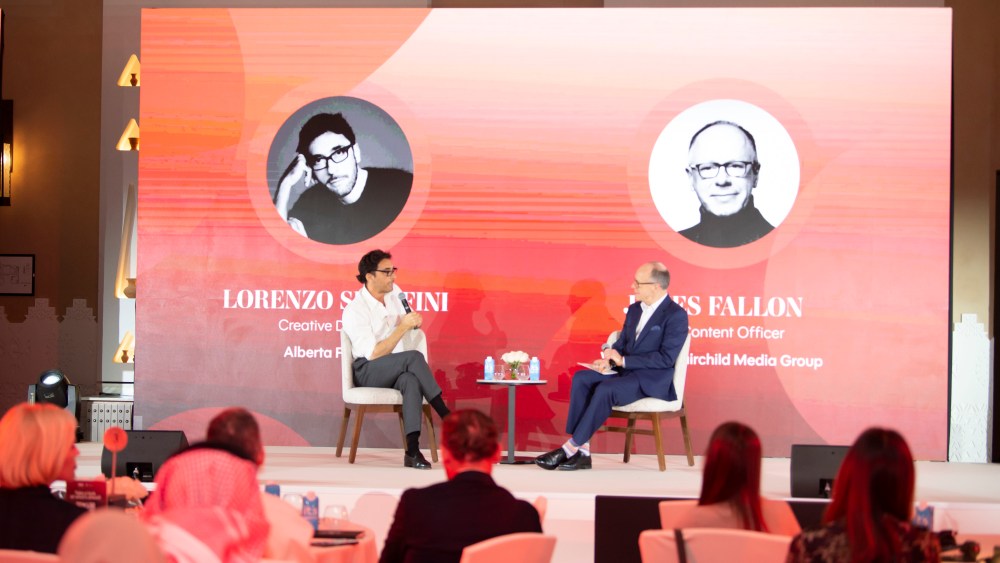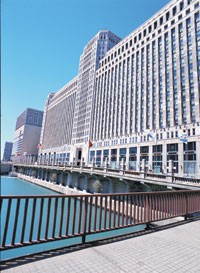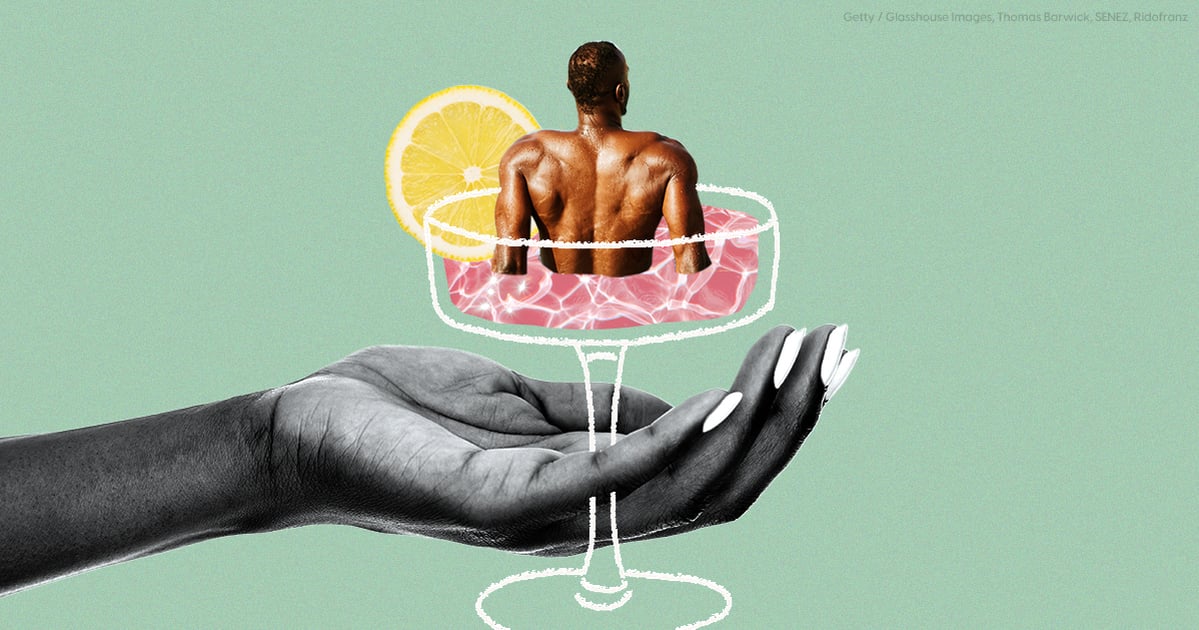Designer Alberta Ferretti in October last year selected Lorenzo Serafini to carry on her namesake brand after revealing her decision to step down.
She expressed her confidence in Serafini, who joined Aeffe, which also controls the Moschino and Pollini brands, as creative designer of the Philosophy line in 2014. The designer unveiled his first collection for the Alberta Ferretti brand in Milan last February and during the 2025 WWD Global Fashion & Beauty Summit in Riyadh, in conversation with James Fallon, chief content officer of WWD and Fairchild Media Group, he spoke about staying true to one’s vision, giving the gift of comfort to women, while at the same time helping them feel feminine and sensual, and expressing how blessed he feels to be able to do the job he’s always wanted to do.
Here, an edited version of their conversation.
You May Also Like
WWD: How did you get into fashion and why?
Lorenzo Serafini: Well, actually, it’s always been my dream. Since I was a child, there was no plan B for me.
I remember how I was intrigued by my mom’s magazines and since I was at a very, very young age, about 15, I started collecting issues of W, Vogue, Harper’s Bazaar, and from those pages, I started feeding my reality of fashion, my understanding of my future, I just wanted to be part of this world. After I graduated from high school I moved to Milano and I started at fashion school. And then I won a fashion competition in Italy, and the first prize was an internship at Blumarine, a fashion brand that actually was quite big back then in the mid-‘90s. I started in 1996 as an intern, spending almost four years and a half there. Then I moved to Roberto Cavalli, and it was an amazing experience, because it was the brand’s heyday, expanding all over as fast as possible and it was a place where everything was possible. Roberto was really a pioneer, encouraging you to do whatever you wanted, whatever you had in mind. There were no limits to creativity. If I think of it now, it was like staying on another planet, I have to say, compared to now.
WWD: It was planet Cavalli.
L.S.: Yes, absolutely, it was planet Cavalli. Everything was possible. And I have to say that he taught me how to dream big, so I have to cherish those years for the rest of my life, it was almost like a family affair there. It was really like a small group of a family, and we were sharing holidays, hours and hours and hours at the studio. There were no limits in anything. You started very late in the morning, and you finished very late in the evening, it was not at all the typical nine-to-five job.
WWD: And then you went to Dolce & Gabbana.
L.S.: Yes, after 10 years. They were looking for a person who could look after the D&G line, men’s and womenswear and accessories. It was quite a big, big job, I have to say. Then they decided after one year and a half [after his arrival] to shut down the line, and I joined them in the ready-to-wear Dolce & Gabbana line almost like a director of studio for the ladies.
WWD: What’s interesting is that Blumarine, Roberto Cavalli, Dolce & Gabbana are all three very flamboyant fashion labels. Then you joined Aeffe and Philosophy, which is, shall we say, much more understated and still a women’s brand, but not the same. How did you shift?
L.S.: I always, always enjoyed doing my job, so for me, it was not at all a big deal if I had to work with Stefano [Gabbana] or with Mrs. [Anna] Molinari, or with Roberto. For me it was actually rather kind of a blessing, honestly, to be able to work with such inspiring persons and to be able to be part of that world. I never felt the will of showing my ego or my person as a frontman. I always enjoyed where I was and actually the most difficult part of the job was to go solo, to go like a frontman and showing myself. It was quite a violent experience the very first time. But then if you consider that you don’t have to ask anything anymore to anyone, “can I do this and can I do that?” You discover freedom in creativity, it’s priceless. It’s really what a creative person may ask for. And I have to say that when I joined the group [Aeffe], they gave me carte blanche. They didn’t ever [interfere] with my creative process, and I have to thank them for this.
WWD: Was it hard to define your own signature then, in your own way?
L.S.: No, it was not. It came very naturally. It was like something that you discover that sometimes you don’t even have to think about, it’s just by instinct that you go and you start choosing the thing you like, the shape you love, the women that you want to talk to, and it’s a very organic process.
WWD: Obviously, you said you learned a lot from Roberto Cavalli and Stefano and Domenico [Dolce] at Dolce & Gabbana. Was there something specific you learned from Mrs. Ferretti in that process?
L.S.: Alberta is a super strong woman. She established her career and her factory back in the ‘80s, in a world shaped by men and by a very specific type of fashion done by men that was completely different. When she came, she tried to speak for someone different, and started to not be overly sexy. She started a dialogue between women that didn’t want to show their sexuality. She encouraged women to embrace their femininity in a softer way. If I look back in time, this was still her best advice.
WWD: You are working in a womenswear brand founded by a woman at a company mainly staffed by women. Does that influence your design process?
L.S.: For me, it’s very important to be surrounded by women because you can understand better their needs, what they love and why they love it. So it’s like a never-ending source of inspiration, for sure.
WWD: But where does it start? Where does the design process for you start? Does it start from the fabric?
L.S.: It’s always a different process, it’s never the same. Sometimes it starts from the fabrics that tell you the shape, or some other times it can be a shape that makes you think of a specific fabric. And then it could be like a vintage piece. It could be like you go for a research trip, or you go in your own archive. For me, it’s never the same rule. What’s interesting in this business is that it allows you to have your own rules.
WWD: Was it intimidating going from the Philosophy brand to now the main Alberta Ferretti brand?
L.S.: No, not really, because the values that we were sharing with Mrs. Alberta were almost very similar, like the respect for women, a soft femininity, and a more sensual approach to fashion, rather than sexual.
WWD: But the system’s never been faster in terms of fashion, creativity, etc. Is that the main challenge for you? Just the speed, because it’s not two seasons a year anymore, it’s 18 or however many collections you’re doing?
L.S.: Yes, speed is a quite an issue nowadays. I can say that since I started, things have changed not twice, like 20 times, maybe. But this is for me the toughest time that I’ve lived in, because you are not allowed to take risks anymore. They expect from you instant results, instant success. And sometimes this kind of fastness doesn’t allow you to think too much about what you really like, what you love, what you would love to say to all the women that you are talking to. Yes, sometimes, for sure, the speed of this business is becoming very challenging, at least for my process.
WWD: There are a lot of fashion brands starting in the Middle East, Riyadh and Saudi particularly. Do you feel that’s the main challenge that young designers face as well?
L.S.: Probably for a young designer that hasn’t experienced a different way, it’s not a big deal. Maybe they started in the fastest way possible. And can you actually say it was better before or not? And there are advantages compared to when I started, so it’s really hard to say if there is a right way.
WWD: But where do you think fashion is headed today? I mean, there have been a lot of creative changes, obviously, we’ll see a lot of them in September at the shows. Just what is driving all this?
L.S.: Well, for sure, finance is driving everyone. We’re here for money at the end, but it’s sad actually. You can’t reduce everything to money, you have to do something that you really believe in, and something you think has a meaning to the people you are talking to, so fashion should be more caring about the audience, instead of giving them a slow-living product [but rather] a much more long-term product.
WWD: Is that the woman you think of as the Alberta Ferretti woman?
L.S.: Since I started, the very first collection at Alberta, I didn’t want to follow any trend. I didn’t want to end in the trap of a seasonal trend. I wanted to build a much more timeless image, as it was for Alberta, she’s always been very true to herself. She’s never changed her style that much. She’s always been really like that type of woman. And for me, it’s such a precious lesson. Once you have your own vision, nowadays it’s so important to follow your path, because there are so many designers speaking their voices, and there are so many good ones as well. Once you have your own vision, you have to stick to it and be true to that vision. It’s the only way today you have, to make you be recognized and to make your audience fall in love with you.
WWD: How do you turn out the noise, though? The noise of being trendy, the noise of what everybody else is doing. I mean, maintaining your own vision is not always easy.
L.S.: Because you can actually get boring. So that’s the other part of the coin. Of course, you have to stay curious about what’s going on around you for sure, and adapt to your own vision. That’s actually not a specific recipe, you have to always follow your instinct and go for that.
WWD: But you mentioned earlier to stick to your vision. How do you as a designer develop the confidence to do so? Is that experience or what?
L.S.: To me, it’s instinct. You can get experience through your career, because you start learning how to build a jacket, how to cut a dress, how to cut on the bias. But again, what makes the difference between every single designer and every single career that a designer can have, it’s their own instinct, actually some kind of a primal survival instinct that makes you choose something different from all the rest.
WWD: Is there something you want to do that you haven’t yet been able to do as a designer?
L.S.: I have to say that I feel blessed, season after season that I can still do what I love is the best thing that I could actually imagine for my life. I’m so glad that I can do this job, and I hope I will be doing it for a long time.


